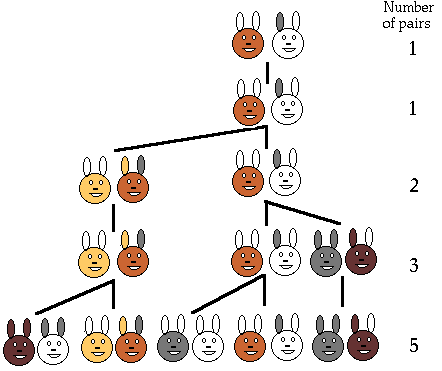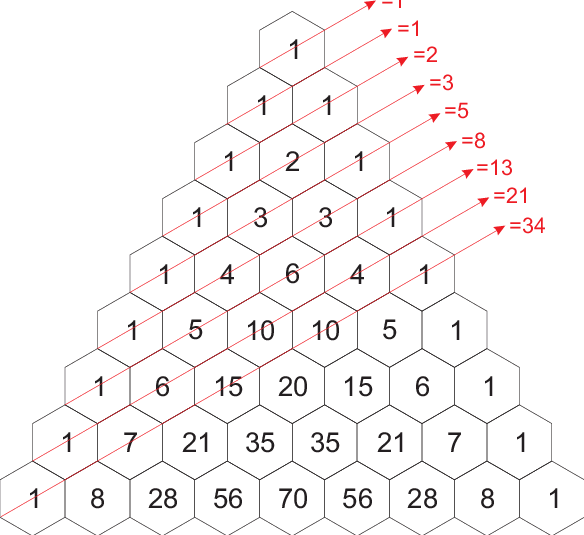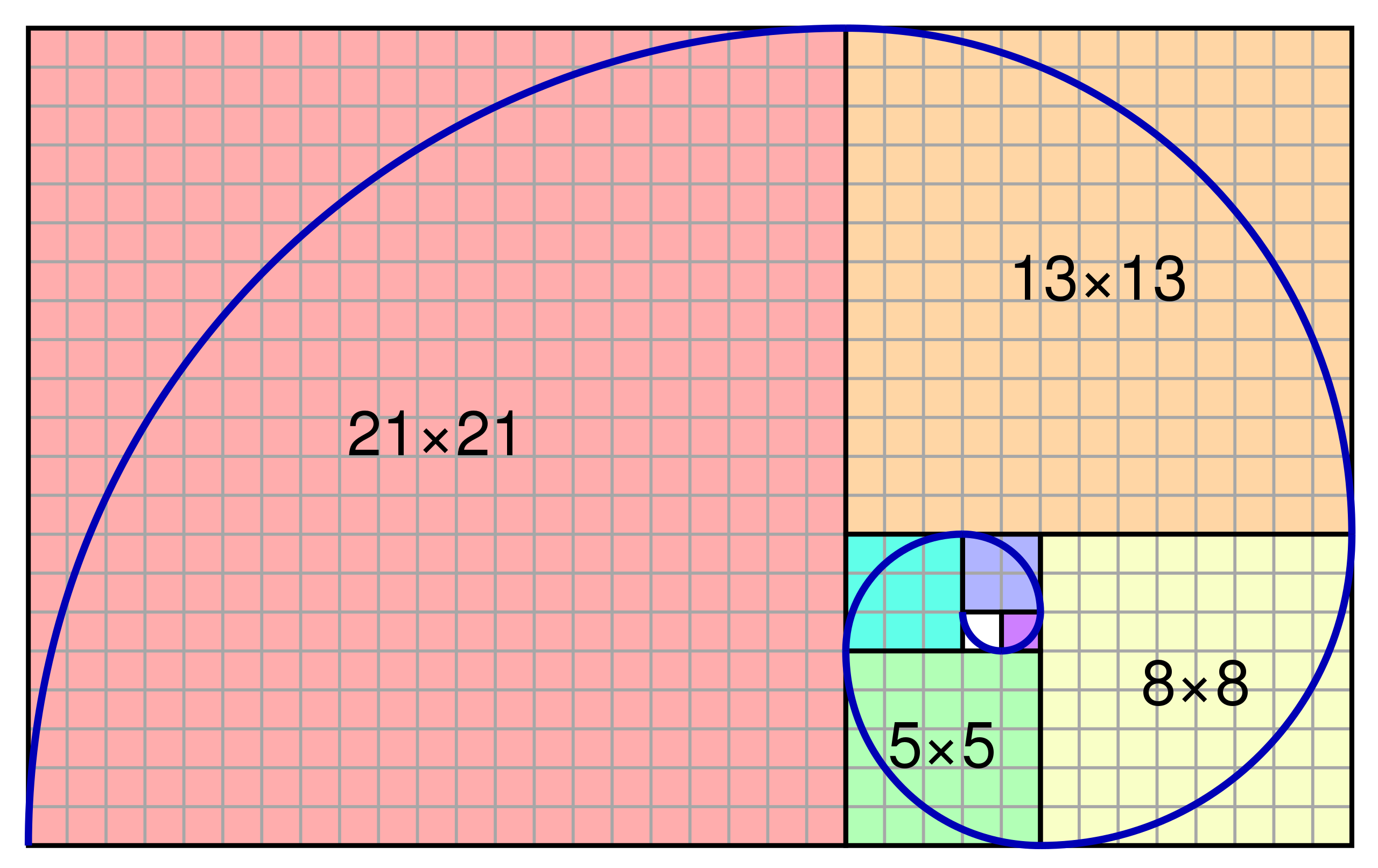- The quiz today is over the Babylonian and Mayan number systems; also the class agendas, and the readings.
- Just a reminder that we have our first exam next week, Thursday, over everything up to Fibonacci numbers. We will review next week, so come with your questions!
- You have an assignment,
which is a reading and some fun videos by Vi Hart.
- I introduced the problem that gave rise to the "Fibonacci"
numbers:

Notice that we're counting pairs, not individual rabbits....
- The definition of the Fibonacci numbers:
\[
\left\{
\begin{array}{cl}
{F_1}&{=1}\cr
{F_2}&{=1}\cr
{F_{n}}&{=F_{n-1}+F_{n-2}}
\end{array}
\right.
\]
for \(n=3, 4, 5, \ldots\). So we're given \(F_1\) and \(F_2\); and then
we generate all the rest using the rule, e.g.
\[
F_3 = F_2+F_1 = 1+1 = 2
\]
The first few Fibonacci numbers (those below 100):
1,1,2,3,5,8,13,21,34,55,89 - We discovered Fibonacci numbers in Pascal's triangle:

- Fibonacci numbers also generate a spiral that nature loves (details in Vi Hart videos):

- The strategy for success in Fibonacci nim was relayed.
It's based on this fact: The Fibonacci factorization
Every natural number is either
- Fibonacci, or
- it can be written as a sum of non-consecutive Fibonacci numbers in a unique way.
Examples?
- 89 is Fibonacci
- 24 = 21 + 3
- 67 = 55 + 8 + 3 + 1
- Let's begin with a review of the secrets of Fibonacci Nim. If you
play by this strategy, you can't lose. And you don't want to
lose to me on the exam next week, so make sure that you
understand....
Suppose there are $n$ counters on the table to start.
- First or Second? To be "in the driver's seat", you should
- arrange to go second if $n$ is Fibonacci;
- go first otherwise.
- Your move? If you're in the driver's seat, then you'll be
able to do this:
- First of all, if you can legally take all the counters, do so! Then you win. Otherwise,
- Write $n$ as the unique sum of non-consecutive Fibonacci numbers; call the smallest Fibonacci in the sum $m$.
- Take $m$ counters.
- 29 counters, and you're first. You're in the driver's
seat, since 29 isn't Fibonacci.
29 = 21 + 8
so you take 8.
I'm up, and looking at 21. It's already Fibonacci. I can't take the smallest in the "sum" -- 21. So I'm out of luck. I can't follow "the strategy". Whatever I take, you'll be able to beat me.
To slow things down, I take 1.
It's now 20 to you. 20 = 13 + 5 + 2. So you take 2 (that's legal). And so on, and you're going to beat me. Argh!
- 34 counters, and you're second. You're in the driver's
seat, since 34 is Fibonacci.
Suppose I go first, and take 4.
Then it's 30 to you. 30 = 21 + 8 + 1, so you take 1. Now it's 29 to me.
You might think "29 to Long, and he can pick first -- he's going to win!" But that's wrong. I'd like to take 8, as before, but I can't -- because 8 is more than twice what you took.
- First or Second? To be "in the driver's seat", you should
- So basically, the whole things comes down to this. If you can
choose whether to go first or second, do it and you're guaranteed a
victory.
- Go first for non-Fibonacci, second for Fibonacci.
- Of course, take all of the counters if that's a legal move.
- Whatever the number of counters on the table, write it as
a sum of non-consecutive Fibonacci numbers;
- take the smallest Fibonacci, if you can; you're now in the driver's seat, and should win.
- if you can't take the smallest (because it's more than twice your opponent's move), take 1 -- it will slow the game down, and hopefully your opponent will make a mistake.
- Who's going to beat me in "Fraudini nim"?
- Now on to some Fibonacci stories from nature:
- Daisies:


- Dandelions
- Pine cones
- Cactus skeletons
- Daisies: